Pushing the Boundaries of Scaffold Design: #BeatMyScaffold2025 Recap
This year’s #BeatMyScaffold2025 contest brought forward an impressive display of creativity, technical skill, and innovative scaffold solutions. The contest invited… Read More
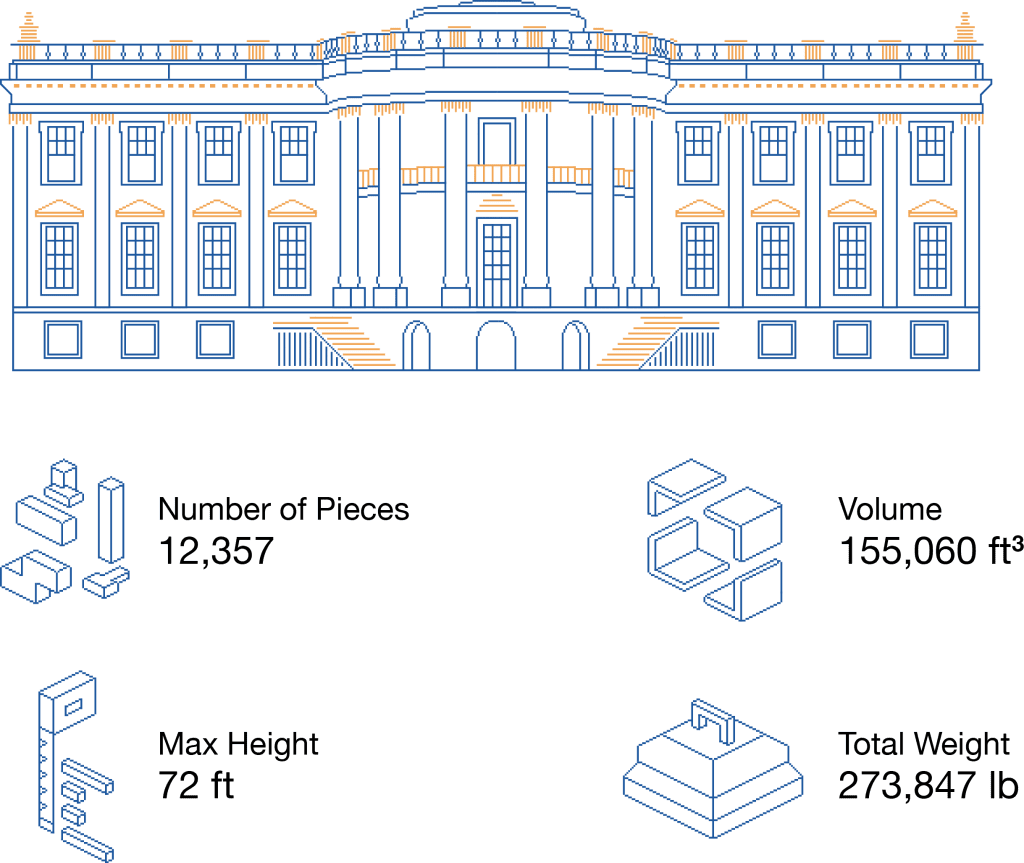
As scaffold designers and engineers, it’s likely that you’ve traveled with your family or friends and the thought has crossed your mind, “How much scaffolding would it take to cover that building?” From the White House to Buckingham Palace, we tried to create scaffolding estimates for buildings that most designers dream of working on. Using Scaffold Designer®, we were able to develop estimates on the total volume, maximum height, the total number of pieces needed and the total weight to scaffold these iconic buildings.
Below, you’ll find estimates on how much scaffolding it would take to scaffold buildings around the world, from the White House to the Buckingham Palace. So next time you’re visiting or working on a site in Washington D.C. or London, you may just have a rough answer for the total amount of materials needed to scaffold the historical buildings of each city.
At almost 170 ft long and 70 ft tall, the unique columns and parapets of the United States White House pose a challenge for scaffold designers and engineers. Planned and constructed under the personal supervision of the 1st President, George Washington, the White House has seen several architectural iterations that required scaffolding at different points in history. Below, you’ll find our estimates for just how much scaffolding it would take to cover the latest iteration of this iconic building.
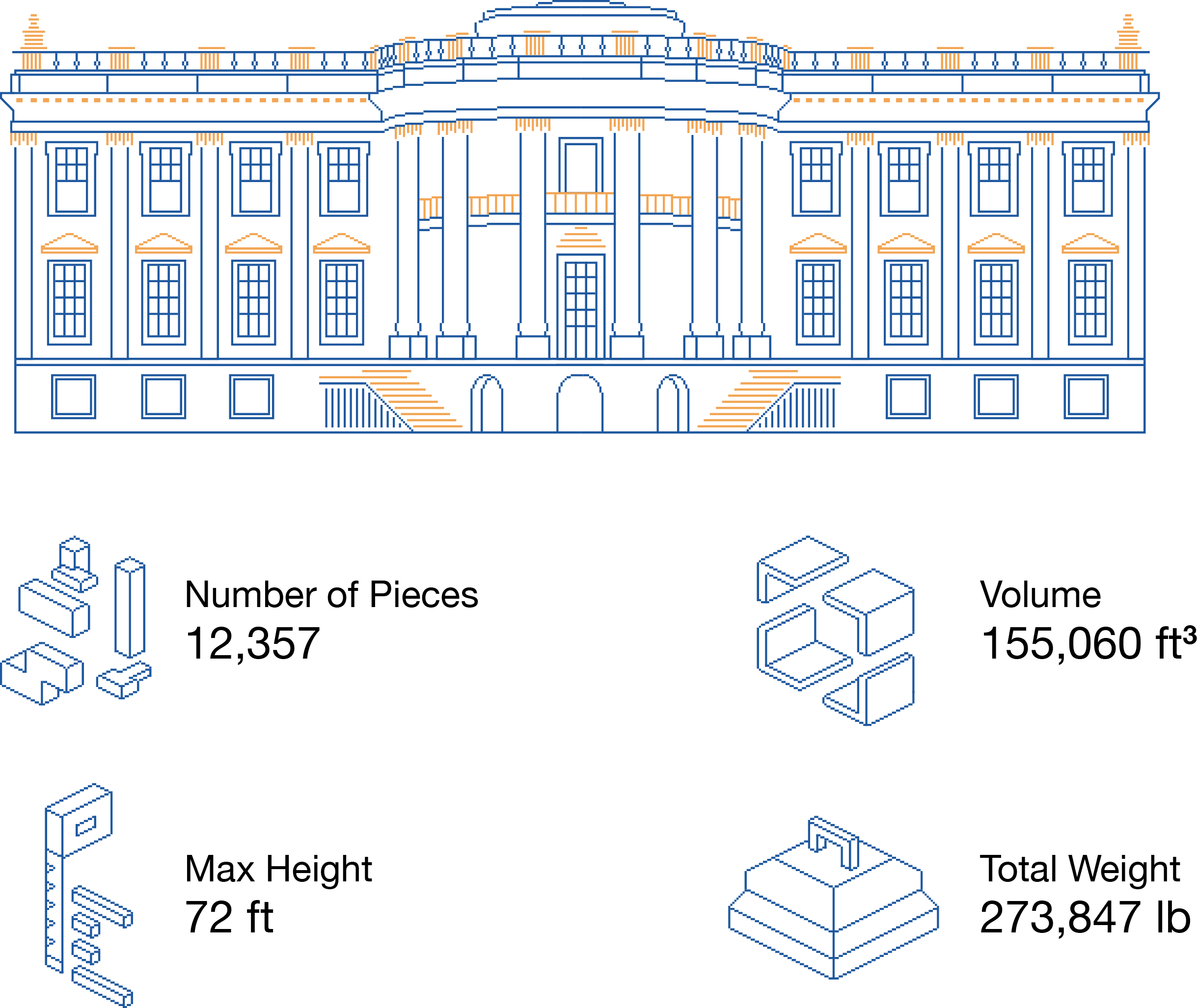
If you’re working on a project in Washington D.C., then you can impress other designers, engineers and friends with your knowledge of the capitol’s architecture. Henry Bacon’s original design, which took over 8 years to complete, poses similar challenges to scaffolding designers and engineers as the U.S. White House. With 36 columns wrapping around the structure, this job requires a designer who is an expert in scaffolding structures. Next time there is a maintenance project, as to make sure that the Lincoln Memorial survives generations, you’ll have an idea of just how much scaffolding will be needed to complete the project.
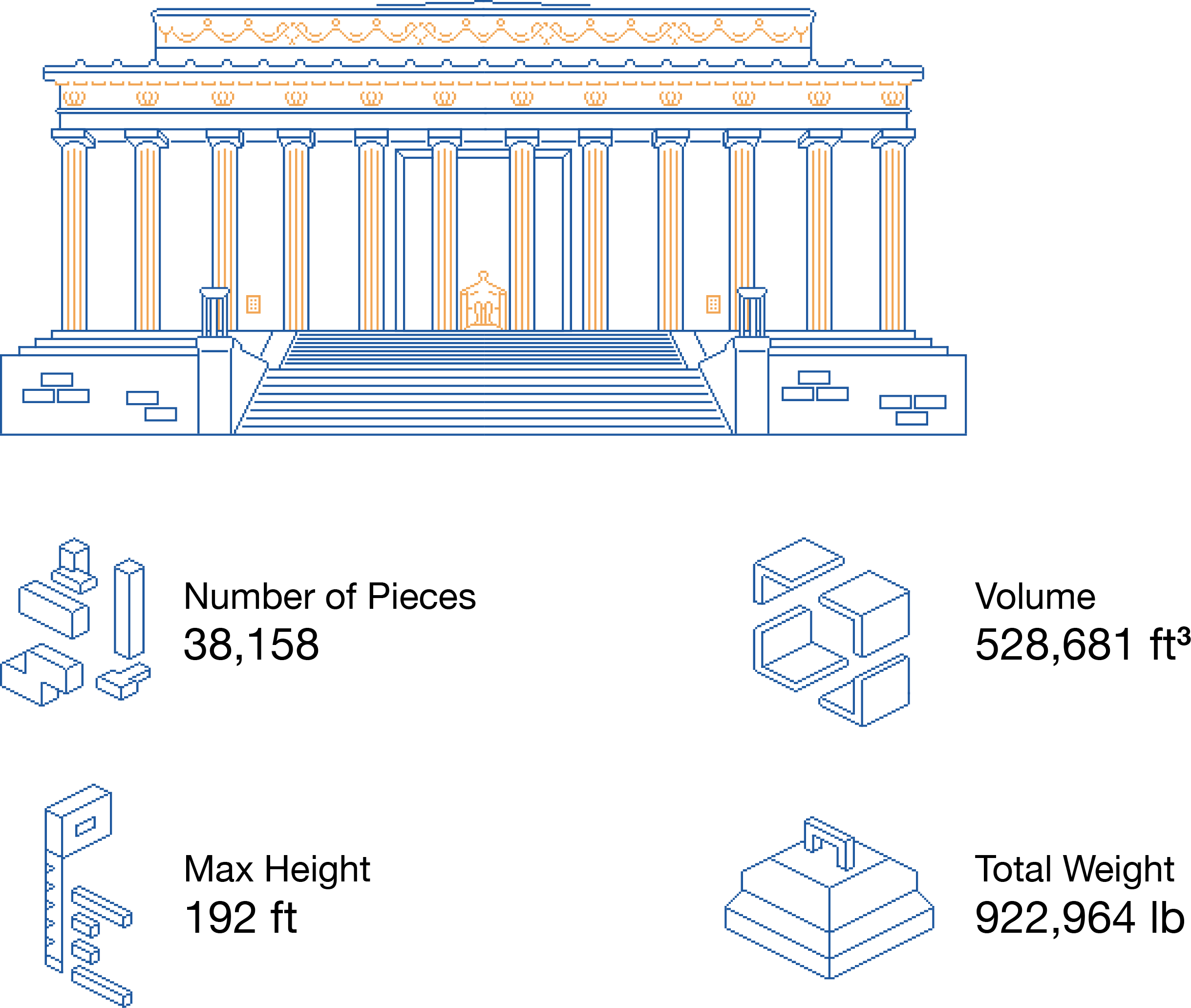
3,000 miles across the United States, the Transamerica Pyramid stands out as one of the most well-known buildings in the San Francisco skyline. The four-sided pyramid building extends roughly 200 ft in the air above its base, totaling 853 ft. After four years of construction, it was the largest skyscraper in San Francisco until earlier this year when it was surpassed by the Salesforce Tower. Although it’s unlikely that the entire structure would be scaffolded, given the location of the Transamerica Pyramid in an area prone to earthquakes, there have been periods of time when scaffolding was erected atop the each wing. Below, you’ll find an estimate of the required materials for scaffolding the entirety of this iconic San Franciscan building.

As the oldest and most revered building on this list, the Notre Dame Cathedral has undoubtedly seen periods of scaffolding since construction began in 1163. Unlike the other Western buildings on our list, the Notre Dame Cathedral took many decades to complete and passed through the hands of several architects and designers. If you read through people’s experiences of visiting the Notre Dame Cathedral, then you’ll find plenty of references to the many years that scaffolding graced its walls. At roughly 300 ft high and 400 ft long, the Notre Dame Cathedral requires a significant team of scaffold designers and engineers to construct a structure large enough to cover its facade — and we’ve estimated just how much that is.
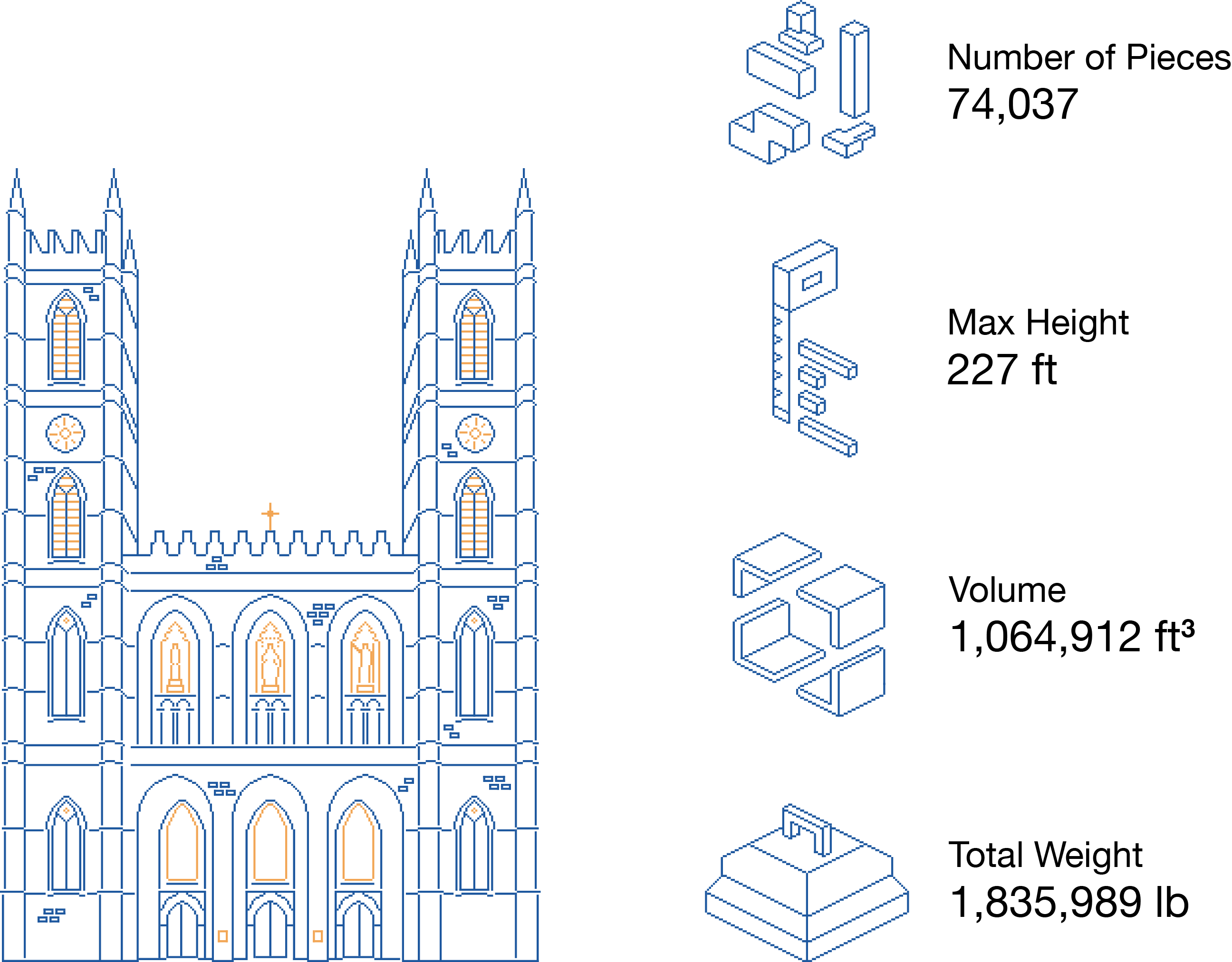
Although some of the buildings on our list haven’t been scaffolded for years, the Big Ben was covered up in early October and will continue through the holidays. At 320 ft high, the Big Ben requires a scaffolding structure with a strong base and protection barriers against the alarmingly loud 118-decibel rings that will continue into the holiday season. Completed in 1859, the neo-gothic structure has required multiple periods of maintenance over the years. Londoners are used to seeing the Elizabeth Tower covered in scaffolding and it seems like this year is no different.
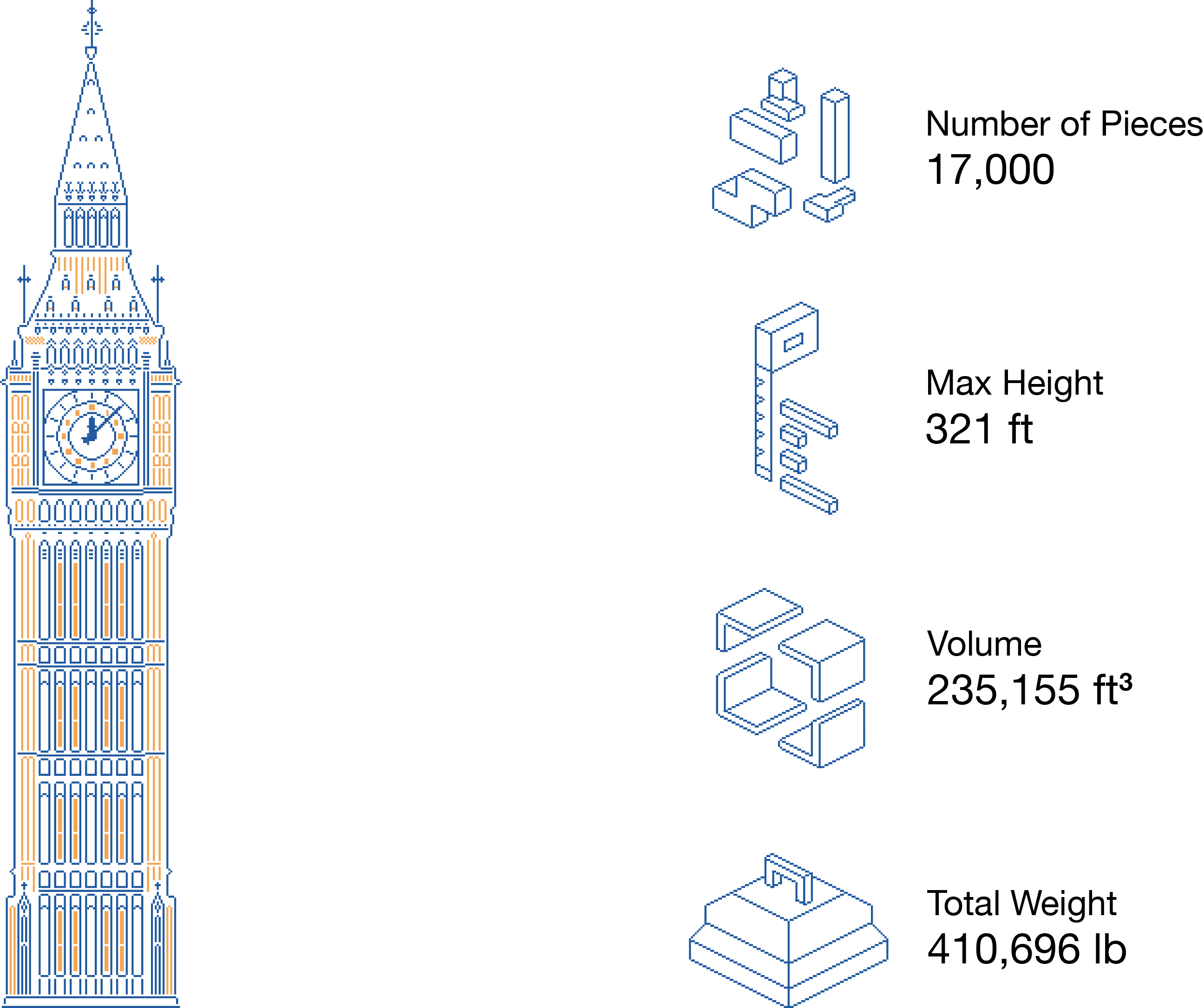
Arguably the most iconic building in England, the Buckingham Palace is no small feat to scaffold. With major additions in the 18th, 19th, and 20th centuries, residents and visitors are also used to seeing scaffolding around the royal quarters. Last year, scaffolding was even erected on top of the Buckingham Palace for maintenance to the palace’s flagpole.
The Buckingham Palace is not only an interesting structure to scaffold due to its complexity, but it also played a major role in the scaffolding industry’s history. In 1906, Daniel Palmer-Jones and his brother, David Henry-Jones started the Rapid Patent scaffolding company and later won a bid in 1913 that led them to create the scaffixer in 1919, an innovative technology that led to the standardization of the scaffolding industry. From all the buildings on our list, the Buckingham Palace was arguably the most important in helping to establish the scaffolding industry.
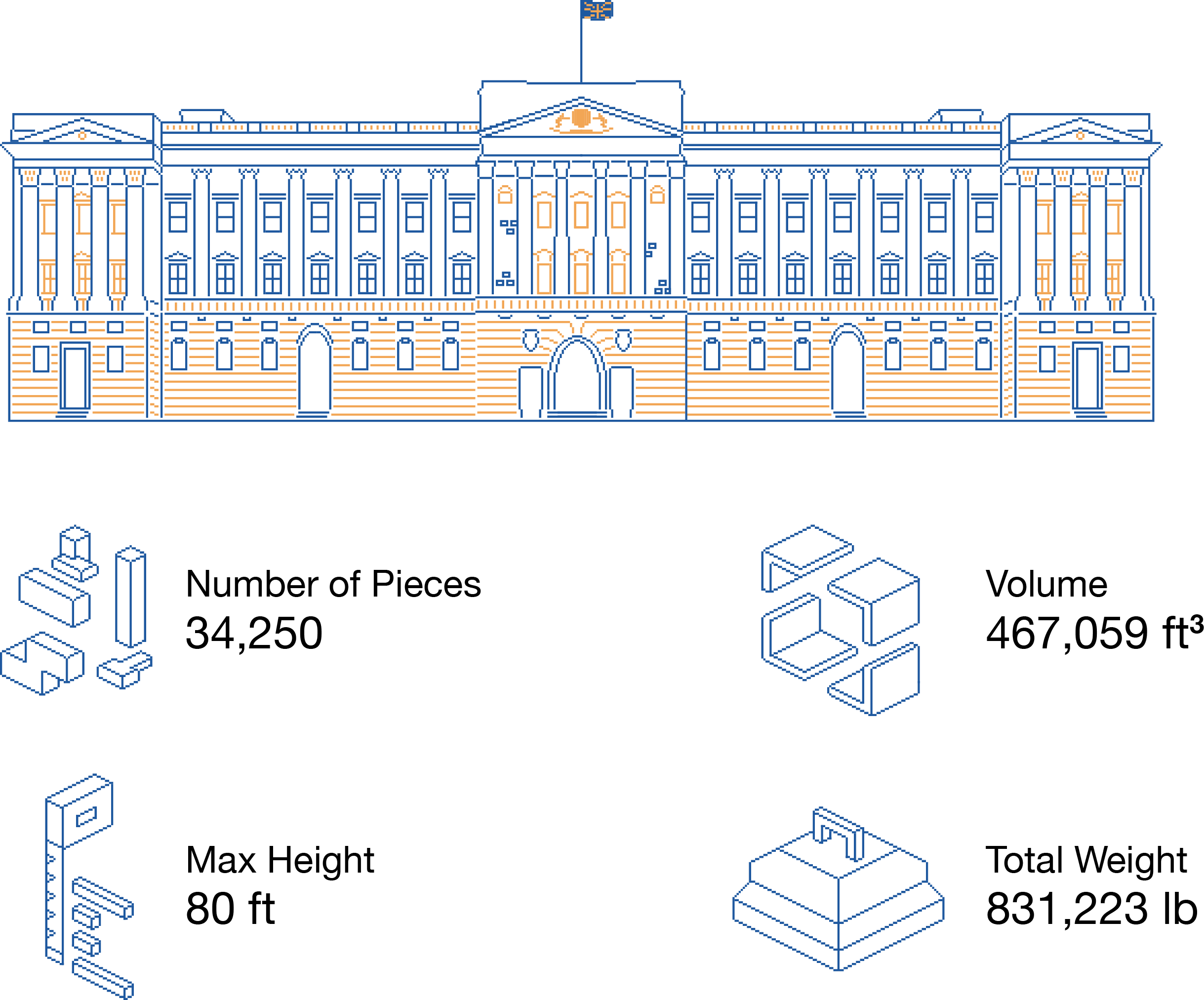
If you like scaffolding structures as much as we do, then chances are you’re excited to walk into the world with your newfound knowledge of how much scaffolding it would take to build iconic structures around the world. And if you’ve had the pleasure of working on one of these buildings, but never knew the final numbers, you can now brag to your friends about how much scaffolding your team was able to put up around these historical sites.